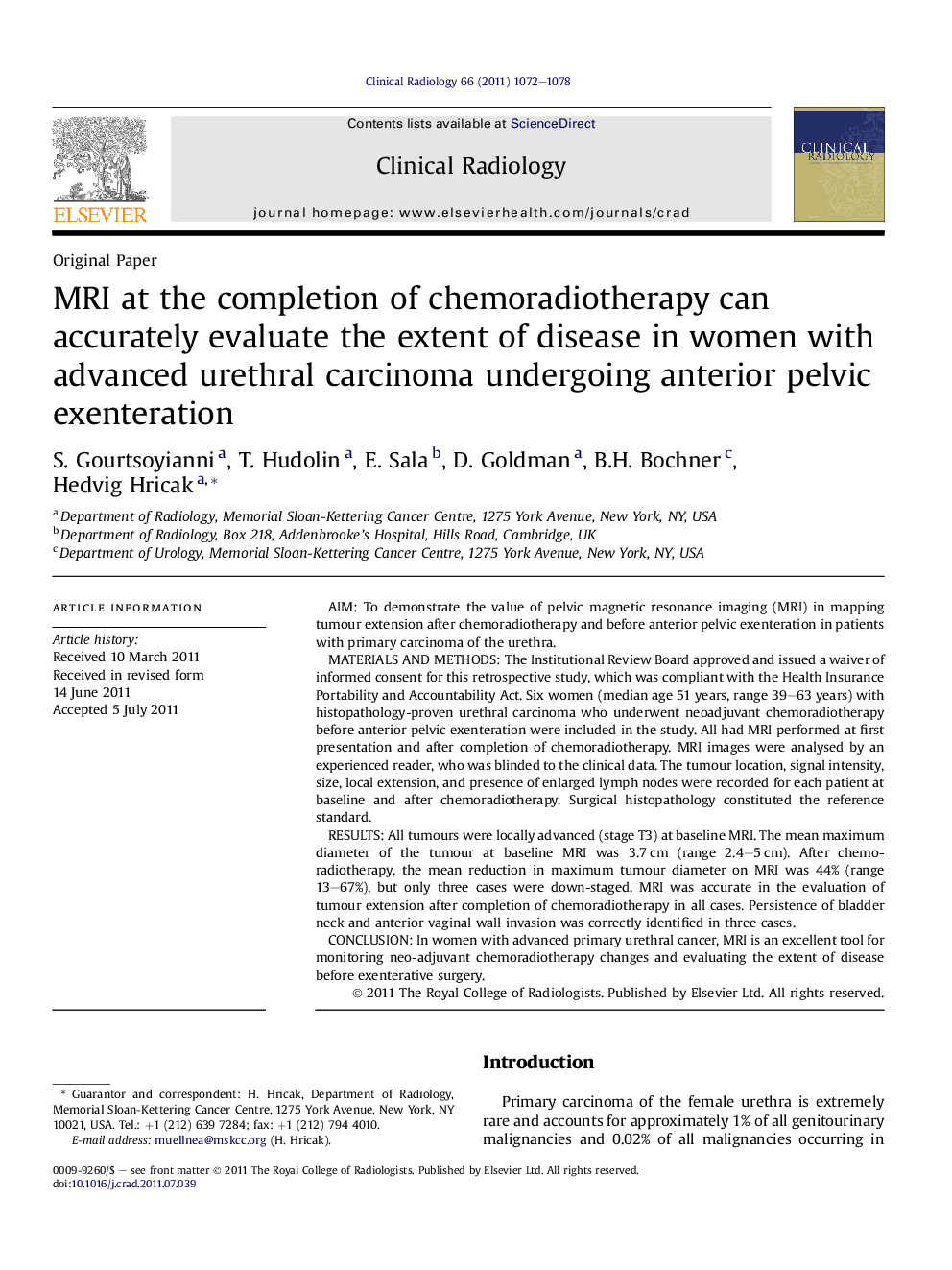| Article ID | Journal | Published Year | Pages | File Type |
|---|---|---|---|---|
| 3981805 | Clinical Radiology | 2011 | 7 Pages |
AimTo demonstrate the value of pelvic magnetic resonance imaging (MRI) in mapping tumour extension after chemoradiotherapy and before anterior pelvic exenteration in patients with primary carcinoma of the urethra.Materials and methodsThe Institutional Review Board approved and issued a waiver of informed consent for this retrospective study, which was compliant with the Health Insurance Portability and Accountability Act. Six women (median age 51 years, range 39–63 years) with histopathology-proven urethral carcinoma who underwent neoadjuvant chemoradiotherapy before anterior pelvic exenteration were included in the study. All had MRI performed at first presentation and after completion of chemoradiotherapy. MRI images were analysed by an experienced reader, who was blinded to the clinical data. The tumour location, signal intensity, size, local extension, and presence of enlarged lymph nodes were recorded for each patient at baseline and after chemoradiotherapy. Surgical histopathology constituted the reference standard.ResultsAll tumours were locally advanced (stage T3) at baseline MRI. The mean maximum diameter of the tumour at baseline MRI was 3.7 cm (range 2.4–5 cm). After chemoradiotherapy, the mean reduction in maximum tumour diameter on MRI was 44% (range 13–67%), but only three cases were down-staged. MRI was accurate in the evaluation of tumour extension after completion of chemoradiotherapy in all cases. Persistence of bladder neck and anterior vaginal wall invasion was correctly identified in three cases.ConclusionIn women with advanced primary urethral cancer, MRI is an excellent tool for monitoring neo-adjuvant chemoradiotherapy changes and evaluating the extent of disease before exenterative surgery.
